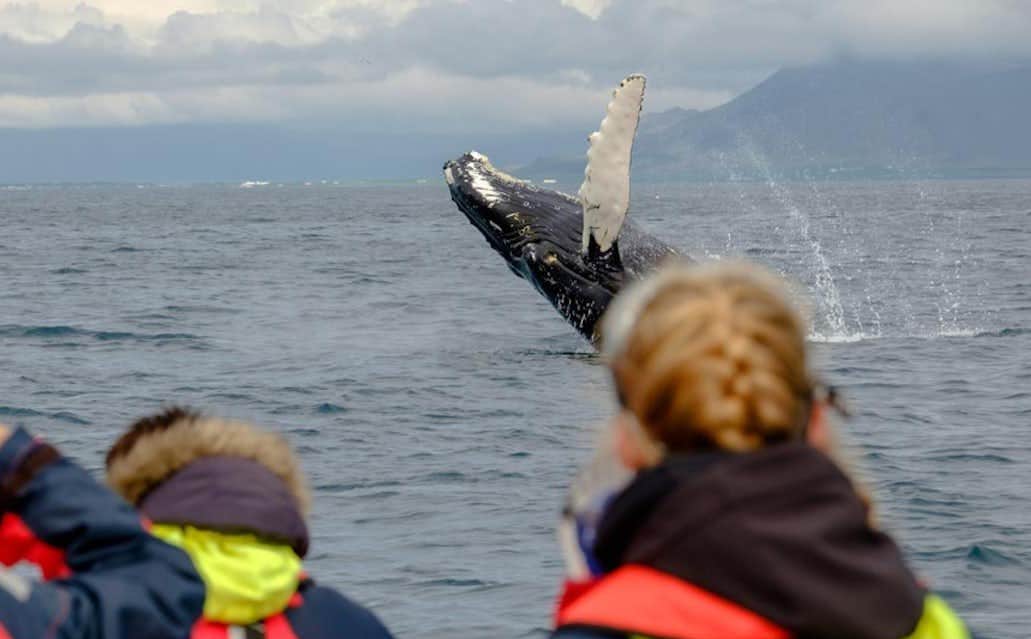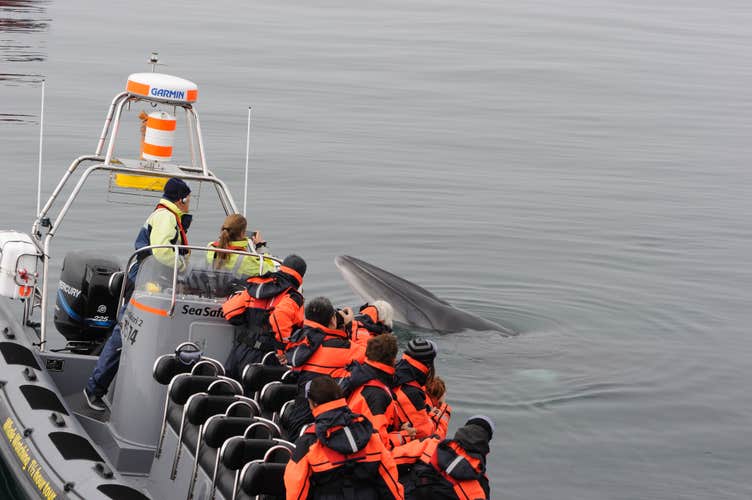Beschreibung
Zusammenfassung
Beschreibung
Bestaune bei dieser Wal- und Papageientaucher-Beobachtungstour die reiche Meeres- und Vogelwelt vor der Küste von Reykjavík. Bei dieser Exkursion in einem RIB-Boot kommst du den Tieren so nah wie möglich, ohne ihr natürliches Verhalten zu stören, und dein Adrenalinspiegel wird garantiert in die Höhe schnellen.
Dein RIB-Boot wartet an der schwimmenden Anlegestelle am Alten Hafen von Reykjavík auf dich. Jedes Boot hat nur 12 Sitzplätze, was ein persönliches und intimes Erlebnis garantiert. Nachdem du deinen Overall und deine Schwimmweste angezogen hast, gehst du an Bord, schnallst dich an und fährst hinaus in die Faxafloi-Bucht.
Bevor du das offene Wasser erreichst, kannst du die Wahrzeichen der Küste von Reykjavík bewundern. Besonders erwähnenswert sind das Konzerthaus Harpa, ein unglaubliches Meisterwerk der modernen Architektur, und der Sun Voyager, eine wunderschöne Skulptur, die das Abenteuer ins Unbekannte symbolisiert.
Je weiter du aufs Meer hinausfährst, desto mehr Landschaften entfalten sich um dich herum. Du kannst den bergigen und grünen Hvalfjördur (Walfjord) und die karge und vulkanische Reykjanes-Halbinsel sehen. Bei besonders klarem Wetter reicht die Sicht sogar bis zur Halbinsel Snaefellsnes.
Die Wildtiere, die du suchst, können jederzeit auftauchen. Die Arten, die sich am häufigsten in Islands Gewässern aufhalten, sind Zwerg- und Buckelwale, Weißschnauzendelfine und Schweinswale. Doch auch andere Tiere wie Orcas, Grindwale, Finn- und Seiwale und der große Blauwal (wenn auch weniger häufig in unseren Gewässern) sind keine Seltenheit.
Der Guide an Bord ist ein Experte im Aufspüren dieser Wale und kann dir während der Tour alles über sie erzählen. Da dein Schiff so klein ist, werden diese Erläuterungen hoffentlich weitergehen, wenn eines der wunderbaren Geschöpfe der Tiefe nur wenige Meter entfernt ist.
Wale, Delfine und Schweinswale sind aber nicht die einzigen Highlights dieser Tour. Es bieten sich auch tolle Möglichkeiten zur Vogelbeobachtung. Dutzende von Arten wie Dreizehenmöwen, Eissturmvögel und Küstenseeschwalben können am Himmel und im Wasser gesichtet werden. Außerdem ist es sehr wahrscheinlich, dass du Papageientaucher siehst (in der Zeit vom 15. Mai bis zum 15. August), denn sie sind in dieser Zeit für ihre jährliche Brutzeit hier.
Nachdem du die Unterwasserwelt der Faxafloi-Bucht bewundert hast, wirst du zurück in den Hafen von Reykjavík gebracht. Auf dem Rückweg genießt du einen weiten Blick auf die Umgebung der Bucht und einen fantastischen Blick auf die Stadt vom Meer aus.
Verpasse nicht diese Gelegenheit, einige der schönsten Tiere Islands zu sehen!
Überprüfe die Verfügbarkeit, indem du ein Datum auswählst.













